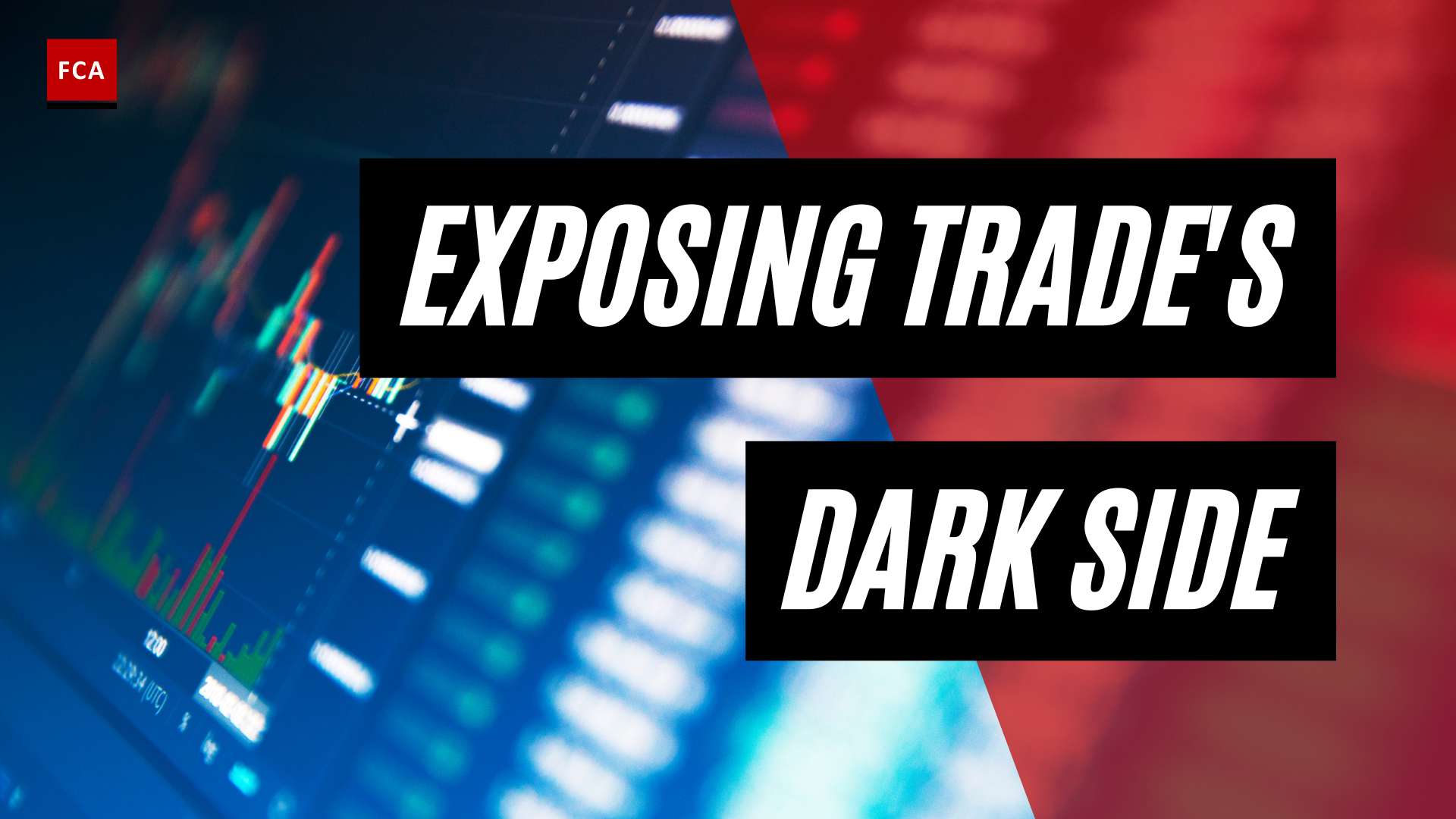Understanding AML Compliance Regulations
Anti-Money Laundering (AML) compliance regulations are laws and guidelines designed to prevent and detect the illicit practice of laundering money. These regulations play a critical role in maintaining the integrity of markets and the overall safety and soundness of financial systems worldwide.
Basics of AML Compliance
In essence, AML regulations aim to prevent the manipulation of financial systems for the purpose of concealing the origin of illicitly obtained money, thereby making it appear as though it was derived from legitimate sources. They encompass a variety of legal requirements that compel financial institutions to monitor, detect, and report potential money laundering activities to the relevant authorities (Investopedia).
Key features of AML regulations typically include the establishment of a Customer Identification Program (CIP), which requires financial institutions to verify the identities of customers opening accounts. Additionally, financial institutions are required to establish internal programs to prevent money laundering, and to report any suspicious activities to the government to assist in law enforcement efforts.
These regulations apply to a wide variety of entities, including banks, credit unions, money services businesses, insurance companies, securities and futures organizations, casinos, and dealers in precious metals, among others.
Key Global AML Regulations
AML compliance regulations may vary by jurisdiction, but several key global regulations have a broad impact due to their extensive reach.
One of the earliest anti-money laundering legislations is the Bank Secrecy Act (BSA) of 1970 in the United States. This act was designed to address the use of financial institutions for money laundering purposes. The Financial Crimes Enforcement Network (FinCEN) was later established in 1990 to further help prevent and punish money laundering, including through the enforcement of AML regulations.
On a global scale, the Financial Action Task Force (FATF), an intergovernmental organization founded in 1989, sets standards and promotes effective implementation of legal, regulatory, and operational measures for combating money laundering and terrorist financing.
In the European Union, the Fourth and Fifth Anti-Money Laundering Directives have introduced new requirements, including the identification of beneficial owners of legal entities and trusts, improved cooperation between financial intelligence units, and enhanced due diligence.
In the U.S., the Anti-Money Laundering (AML) Act of 2020 introduced new regulations, increasing the scope and requirements for AML compliance. The Act aims to prevent money laundering and counter the financing of terrorism, impacting a wide range of entities (Dow Jones).
Understanding these key AML compliance regulations is critical for any financial institution or relevant entity in order to establish an effective AML compliance program. This typically involves the implementation of a robust AML compliance framework and the appointment of an AML compliance officer to oversee the program. It also often involves the use of AML compliance software to automate and streamline compliance tasks and the provision of AML compliance training to relevant staff members.
AML Compliance in the United States
In the United States, the journey towards comprehensive anti-money laundering measures has been shaped by several key pieces of legislation. The three most influential being the Bank Secrecy Act, the USA PATRIOT Act, and the AML Act of 2020.
The Bank Secrecy Act
The Bank Secrecy Act (BSA) of 1970 marked the beginning of anti-money laundering legislation in the United States. This Act aimed to address the use of financial institutions for money laundering purposes. Over time, the BSA has been amended by various subsequent legislation to increase its scope and effectiveness. The Act set the foundation for future AML compliance regulations and laid the groundwork for the establishment of an AML compliance program (Investopedia).
The USA PATRIOT Act
The USA PATRIOT Act, enacted in 2001, further expanded on the BSA’s foundation. This Act requires all banks and financial institutions in the United States to understand and adhere to their AML compliance obligations. It required the Secretary of the Treasury to enact regulations mandating financial institutions to maintain and secure customer information. This information could assist in preventing and prosecuting money laundering and terrorist financing activities (Investopedia).
Violations of the USA PATRIOT Act can result in severe penalties, including fines of either $1 million or double the value of the transaction, whichever is greater.
The AML Act of 2020
The most recent addition to the United States’ AML landscape is the AML Act of 2020. This Act introduced new regulations, significantly increasing the scope and requirements for AML compliance. The Act aims to prevent money laundering and counter the financing of terrorism. It impacts a wide range of entities, including financial institutions, casinos, and dealers in precious metals (Dow Jones).
In light of these regulations, the role of an AML compliance officer has become increasingly pivotal. The officer is tasked with ensuring that all AML policies, controls, and procedures align with the requirements set out by these acts. To ensure adherence to these regulations, the use of an AML compliance checklist and AML compliance software can be beneficial. Furthermore, ongoing AML compliance training is vital to keep pace with the evolving AML landscape.
By understanding these three key pieces of legislation, professionals can better navigate the complexities of AML compliance regulations in the United States.
AML Compliance in the European Union
The European Union (EU) plays a significant role in global AML compliance regulations, issuing Anti-Money Laundering Directives (AMLD) periodically to standardize AML/CFT regulation across the bloc. These directives are adopted by all member states to ensure a unified approach to combating money laundering and terrorist financing.
The Fourth and Fifth AML Directives
The Fifth Anti-Money Laundering Directive (5AMLD), implemented on January 10, 2020, introduced new requirements to strengthen the EU’s defenses against money laundering and terrorist financing. The directive required the identification of beneficial owners of legal entities and trusts, improved cooperation between financial intelligence units, and enhanced due diligence (Dow Jones). These measures aimed to increase transparency and make it more difficult for criminals to abuse the financial system. EU member states are required to transpose the directive into national law and implement its provisions.
The Sixth AML Directive
The Sixth Anti-Money Laundering Directive (6AMLD), implemented on June 3, 2021, introduced even stricter measures to combat money laundering and terrorist financing. It expanded the list of predicate offenses for money laundering, increased penalties for non-compliance, and enhanced cooperation between EU member states.
Moreover, 6AMLD aims to harmonize AML regulations across EU member states and strengthen the EU’s ability to combat money laundering and terrorist financing. It introduced new provisions, including criminal liability for legal persons, extended jurisdiction for money laundering offenses, and enhanced cooperation between authorities.
In the UK, despite its exit from the EU, aspects of the 6AMLD are being implemented. The primary AML/CFT regulations in the UK include the Money Laundering, Terrorist Financing and Transfer of Funds Act 2017, the Proceed Of Crime Act 2002, and the Terrorism Act 2000.
For professionals working in compliance, understanding these directives and ensuring their implementation is crucial. This includes setting up a robust AML compliance program, training staff through AML compliance training, and using AML compliance software to aid in detection and reporting. An effective AML compliance policy is fundamental to meeting these directives’ requirements.
Implementing AML Compliance Programs
The implementation of an effective anti-money laundering (AML) compliance program is crucial for financial institutions to mitigate the risks associated with money laundering and terrorist financing. It also ensures compliance with regulatory requirements, thereby avoiding the severe consequences of non-compliance (Financial Crime Academy).
Risk Assessment
The first step in developing a BSA/AML compliance program is conducting a risk assessment. Financial institutions should identify and evaluate risks inherent in their business by looking at products and services, customers, and geographic locations. This process helps to create an effective compliance program that fits their risk profile (Lowers Risk Group). For a comprehensive guide on how to conduct a risk assessment, you can visit our AML compliance checklist.
Internal Controls and Audits
Internal controls review is a vital component of a BSA/AML compliance program. This review assesses the policies, procedures, and processes of the financial institution to ensure AML compliance. This review covers both personnel and structural elements, including clear internal responsibilities and adherence to secure standards like dual controls and segregation of duties. To effectively manage these controls and audits, you can use our AML compliance software designed specifically for financial institutions.
Independent third-party audits are recommended every 12 to 18 months (or even more frequently for higher risk financial institutions) as a best practice for AML compliance. These audits should be responsive to the organization’s risk profile and help in ensuring the effectiveness of the compliance program.
Role of the AML Compliance Officer
Every financial institution is required to designate a BSA/AML compliance officer to oversee the implementation of the compliance program. The officer ensures that the Board and senior management are aware of the organization’s compliance status, and must be well-versed in BSA/AML regulations to effectively design and implement the program (Lowers Risk Group). For more details about the responsibilities and qualifications of this role, you can visit our AML compliance officer page.
Implementing robust AML compliance programs is not a one-time task but an ongoing responsibility. It requires regular updates and revisions to stay compliant with the latest AML compliance regulations. For example, pursuant to the Anti-Money Laundering Act of 2020 (AML Act), the U.S. Department of the Treasury’s Financial Crimes Enforcement Network (FinCEN) published the first national priorities for anti-money laundering and countering the financing of terrorism (AML/CFT priorities), as part of the National Strategy for Combating Terrorist and Other Illicit Financing (OCC).
These AML/CFT priorities are applicable to all OCC-supervised banks and it is recognized that not all priorities will be relevant for every bank. FinCEN, in consultation with federal functional regulators and state financial regulators, is required to publish and update the AML/CFT priorities at least once every four years as mandated by the AML Act. For more information on the AML/CFT priorities, you can contact James Vivenzio, Director for BSA/AML Policy, at (202) 649-5470.
Implementing AML compliance programs requires a detailed understanding of the regulatory landscape, the risks inherent to the institution’s operations, and the necessary measures to mitigate those risks. For more insights on establishing an effective AML compliance framework, refer to our AML compliance framework guide.
Consequences of Non-Compliance
Non-compliance with Anti-Money Laundering (AML) regulations can lead to severe consequences, extending beyond just financial penalties. It can significantly impact an organization’s reputation and even result in legal repercussions.
Financial Penalties
Financial institutions that fail to comply with AML regulations can face significant financial penalties. For example, under the Bank Secrecy Act (BSA) of 1970, which is the most significant U.S. law for preventing money laundering, penalties can include fines of up to $500,000.
| Violation | Penalty |
|---|---|
| Non-compliance with BSA-related AML regulations | Up to $500,000 in fines |
Legal Repercussions
In addition to financial penalties, non-compliance can also lead to serious legal repercussions. In the United States, for instance, violations of the BSA-related AML regulations can not only result in fines but also imprisonment for up to ten years.
| Violation | Legal Repercussion |
|---|---|
| Non-compliance with BSA-related AML regulations | Up to 10 years imprisonment |
Moreover, the failure to implement effective AML compliance programs can lead to regulatory scrutiny and potential legal action, significantly damaging the reputation of the financial institution in question.
Impact on Reputation
Reputation is a valuable asset for any financial institution, and non-compliance with AML regulations can significantly impact it. Non-compliance can lead to a loss of customer trust and investor confidence, which can have long-term effects on the institution’s profitability and sustainability.
The impact on reputation can extend beyond the immediate consequences. For instance, a tarnished reputation can affect the institution’s ability to attract new customers or retain existing ones. It can also make it more difficult to secure investments or partnerships.
In conclusion, complying with AML regulations is not only a legal requirement but also a business necessity. An effective AML compliance program can help organizations avoid these severe consequences and ensure that they are equipped to detect and report suspicious activities effectively.
AML Compliance Case Studies
Learning from the past is key to avoiding future mistakes. In the context of AML (Anti-Money Laundering) compliance, examining case studies of non-compliance can provide invaluable insights into the potential pitfalls and challenges that organizations may encounter. This section presents three case studies of significant AML compliance failures: Capital One, Deutsche Bank, and HSBC UK.
Capital One’s AML Compliance Failure
Capital One, a well-known American bank holding company, faced a hefty fine due to its shortcomings in adhering to AML compliance regulations. The financial institution was fined $390 million for deliberate and careless violations of the Bank Secrecy Act. The violations included failure to file thousands of Suspicious Activity Reports (SARs) on time and failure to file thousands of Currency Transaction Reports (CTRs) Unit21.
This case highlights the importance of timely and accurate reporting in compliance with AML regulations. It underlines the need for robust internal controls and regular audits as part of an effective AML compliance program.
Deutsche Bank’s AML Sanctions
Deutsche Bank, one of the world’s leading financial service providers, faced severe repercussions due to AML non-compliance. The bank was fined $130 million for violating the Foreign Corrupt Practices Act and a commodities fraud scheme involving millions of dollars funneled through the bank Unit21.
This case demonstrates the far-reaching implications of non-compliance, extending to international laws and regulations. It underscores the need for stringent AML compliance controls and comprehensive AML compliance training to prevent such violations.
HSBC UK’s AML Compliance Shortcomings
HSBC UK, a significant player in the global banking sector, also faced a substantial fine due to failures in its AML processes. The bank was fined $85 million for failures in its transaction monitoring systems, which were the backbone of the bank’s AML processes from 2010 to 2018 Unit21.
This case study emphasizes the importance of maintaining effective transaction monitoring systems as a critical part of an organization’s AML compliance framework. It also brings attention to the role of technology, such as AML compliance software, in facilitating efficient and effective compliance processes.
These case studies vividly illustrate the severe consequences of non-compliance with AML regulations, including substantial financial penalties, legal repercussions, and damage to reputation. They also emphasize the crucial role of an AML compliance officer in overseeing an organization’s adherence to AML standards. By learning from these examples, organizations can strengthen their AML compliance strategies and avoid similar pitfalls.








